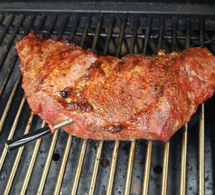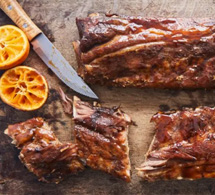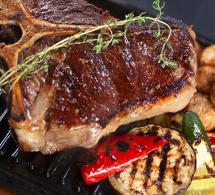How to Use a Food Probe Accurately?

At GrillMeater we produce a range of different food thermometers, many of which use a penetration probe to measure the internal temperature of liquid and solid foods. We manufacture several different types of food thermometer probes: Bluetooth, wireless, and dual-needle probe thermometers. Each type has slightly different response times, sizes, and accuracy, but each type works by inserting a probe into the food being measured and sending a signal to a thermometer unit to produce a reading.
Taking accurate measurements with a probe thermometer may sound simple, but it's easy to make mistakes. Ensuring correct readings is critical to food safety and quality.
The type of application will help determine the level of accuracy required. Cooking a steak medium-rare requires a lot of precision to make sure it's just right, while soups or reheated foods require less precision as they only require 74℃or higher. Read on to learn how to measure the temperature of different types of food.
How to Measure Solid Food?
Whether you're heating or cooling solid food, the core of the thickest part changes the slowest in temperature. Therefore, you need to measure the area to ensure it is fully cooked or cooled. To find the center of food such as meat, slowly insert a thermometer into the meat and watch how the temperature drops as it approaches the center, then rises again as it passes through the center. By doing this, you can find the minimum temperature of the meat, making sure it reaches your safe or desired temperature.
On a whole bird, the thickest part is usually between the breast and thighs. Meat like this usually changes in temperature a lot throughout the process, giving very different readings from leg to breast. It's a good idea to spot-check large pieces of meat to make sure they're up to temperature everywhere, take care to avoid bones or cartilage as this can lead to inaccurate readings.
For smaller, thinner cuts of meat, such as burgers, steaks, and chicken breasts or wings, it is important to ensure that the probe does not penetrate all the way through the meat and reach the surface below. Using tongs to hold the meat and measure the temperature from the sides rather than from above can help prevent this.
To use the GrillMeater Food Probe you only need:
1. Insert the probe into your food; choose your protein and start cooking, no guesswork required.
2. Set target temperatures with the app; check your cooking status and receive notifications anywhere your smart device has an internet connection.
3. Start cooking food; know when your meat is ready and manage your time better.
4. Notify immediately when food is ready; cook different meats at different temperatures at the same time.
By following the above steps, you will become a master at cooking and no longer have to worry about overcooking your food!
How to Measure Liquid Food?
Accurate temperature readings for liquid foods are slightly different than for solid foods because they heat and cool by convection rather than conduction. So it's not just a matter of taking a reading from the center, but checking the entire fluid. The best way is to stir the liquid first, then stir the thermometer probe in the liquid and observe the temperature change as the thermometer probe moves through the food.
Responding Speed
The temperature of some thermometers takes longer to stabilize than others, depending on the sensor type. For thermometers with slow response times, it is important to give them time to provide accurate readings.
How Accurate Is a Food Probe?
There are many factors that go into ensuring a thermometer's accuracy, including the capabilities of the laboratory that calibrates the thermometer and documentation of each step of the process. The best way for users to determine the accuracy of a thermometer is through its measurement certainty. Measurement certainty refers to the difference between the instrument reading and the true temperature of the object being measured, represented by the symbol ±. For example, if measuring the temperature of 100℃ boiling water, a thermometer with an accuracy of ±0.5℃ might give a reading of 99.5℃ to 100.5℃.
Avoid Cross Contamination
Since the thermometer is inserted into the part of the meat or food where bacteria is most likely to grow, it is crucial to sterilize it between each use. Otherwise, you will unknowingly spread harmful bacteria throughout your kitchen. When not in use, immerse the probe in a beaker of disinfectant or bleach and disinfect it with an alcohol swab before each use.
The above is a brief introduction to the use of food thermometers. If you want to know more or want to buy a food thermometer, please contact us.
GrillMeater is a professional custom food cooking probes manufacturer. For 30 years, GrillMeater has adhered to the concept of sensing temperature and exploring life, focusing on the R&D and manufacturing of food temperature measurement equipment, core body temperature telemetry equipment, and temperature and humidity recorders. The interdisciplinary project team owns dozens of key technologies and international and domestic invention patents and is in a leading position in the cutting-edge technology fields of temperature network sensing and feature management.
Our food cooking smart probes sell well at home and abroad, providing products and solutions to many global customers such as the Fortune 500, kitchen appliance manufacturers, Amazon e-commerce, AliExpress e-commerce, etc., and are widely used in home life, restaurants, hotels, food Processing, kitchen appliances.













